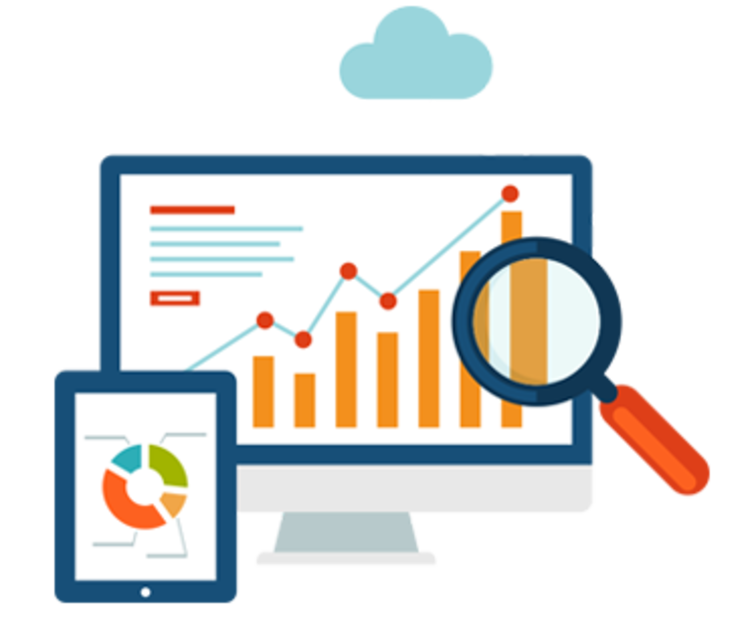Blog and News > marketing > Using Analytics for your Website
Using Analytics for your Website
When deciding to use Analytics for your website and business, it’s difficult to decide exactly what you do with the intelligence you’re presented with. Unless you have a clearly defined plan, there are always new things to use that data for. Here we’ve taken a look at some of the key questions you might want to be asking when it comes to looking at Analytics for your website.

Often when a business adopts a platform like CANDDi for the first time they will go through two phases of thought:
- “Wow, it’s so cool I can see everyone who’s visiting the site”, closely followed by;
- “What do I do with this?”.
It’s easy to get a little bit overwhelmed with the wealth of data they’re acquiring, focusing on the low hanging fruit is one thing but what else could be learnt from the web traffic and how can you use that to improve conversions?
If you’re beginning to ask “what do I do with this?” there are a few key questions to begin thinking about.
Who is visiting the site and is it who we want?
You’ll know your business and your market better than anyone else. The question is therefore how much of your potential audience is visiting your site? And are they seeing what you want them to?
This has a big part to play in “what’s working on the site?”. It’s all well and good having conversions, but try to think more about the number of visitors (or conversions) relative to the size of the market you’re actually marketing to. Are you being as effective as you could be?
Here lies one of the typical pitfalls of PPC or Adwords. Although driving traffic in this way can be fantastic when done by experts and with the right amount of diligence. 500 clicks (and £2,000 spent) from students researching for their dissertation or your favourite SEO Agency in Bangladesh telling you they have the pixie dust you website needs isn’t an effective use of your budget (see PPC vs Email Marketing).
Knowing your market and how is best to market to them is key in gathering a better understanding of web performance. Your organic visits will always happen but the quality of and often you market will naturally correlate to the volume of traffic and conversions you want to achieve.
What’s working?
Some important questions we covered in one of our previous articles on improving visitor engagement were focused on looking at navigation, content and visitor feedback. A glorious feature of web analytics is seeing how effective your website is at retaining visitors, and whether visitors are engaging in the ways you anticipated. If not, what is it you can do to begin optimising the site to get the levels of engagement you want?
You want to determine what success looks like for you and use that as a benchmark for future decision making. You’re not going to be able to set these targets without studying how your website is performing now - it’s more than just bottom of the funnel enquires you should be concerned about.
There are two principles to bear in mind:
If it’s broke, fix it.
Solve issue that arise, see where the weak points are and endeavour to resolve them (starting with the biggest first).
If it isn’t broke, improve it.
Don’t settle, if you do what you’ve always done you’ll get what you’ve always got. There are always things that can be improved in order to learn and engage more with your visitors.
How can we improve?
The critical piece here is to experiment!
Ultimately, aside from being an information resource your website should also be a sales funnel within itself. But don’t just think about what’s coming out at the bottom, what is there that’s getting caught? What traps are there that you aren’t giving enough attention and what can you do in order to maximise on these opportunities? This will aim to engage your sales and marketing teams to begin acting on the lower hanging fruit, not just the fruit that drops.
If you haven’t already, understand what you believe to be the typical customer/client journey taken across your site. Factor in everything from how they landed, where they went and when they left. There are some great tools out there that can help discover how people are interacting with your site including heat mapping, session-recording a mouse tracking (to be covered at a later time!).
From here, begin thinking about your core market and where you can begin segmenting who’s going to be coming in at the bottom of the funnel and then who you can catch and push further over the line (that’s where prospect analytics like us come in).
This could be anything from focusing on and re-marketing to your checkout drop-outs or known prospects you’ve marketed to and are landing on your case study pages. Then begin tailoring where you send people through the site in order to catch or convert.
Ask yourself, what don’t we know that we should do?
One key piece of advice I’ll leave you with and one I always try to take on board, figure out what it is you don’t currently know but is something you’d want to.
It sounds over simplified, but it’s so common to focus on what you want your customers to do that you overlook what it is they’re actually doing. Then ask yourself why that is.
Web analytics are a fantastic way to begin understanding your web traffic in more detail and siphoning off the relevant traffic in order for marketing and sales to do what they do best.